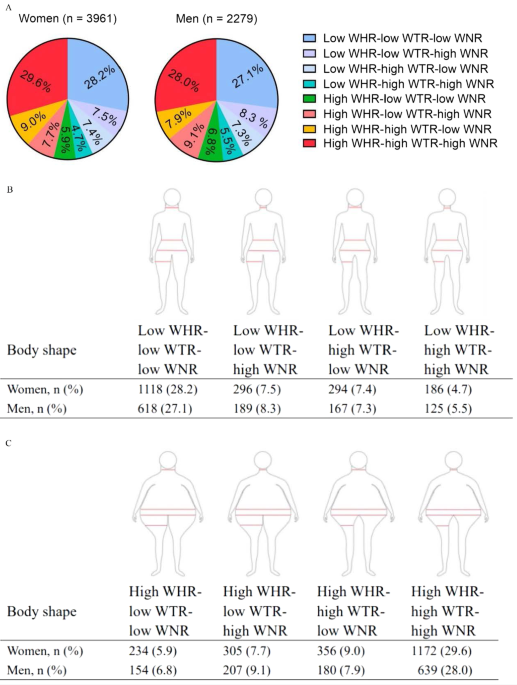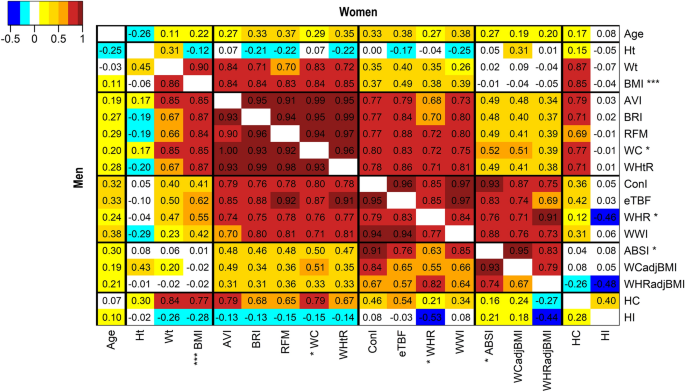By A Mystery Man Writer

Background We aimed to define refined body shapes by using multiple anthropometric traits that represent fat distribution, and evaluate their associations with risk of insulin resistance (IR) and cardiometabolic disorders in a Chinese population. Methods We performed a cross-sectional analysis in 6570 community-based participants aged ≥ 40 years. Four body circumferences (neck, waist, hip, and thigh) and their ratios were put simultaneously into an open-source Waikato Environment for Knowledge Analysis platform to select the worthiest indicators in determining IR. The ratio of the top 3 fat distribution indicators was used to define the refined body shapes. Results We defined 8 distinct body shapes based on sex-specific combinations of waist-to-hip ratio (WHR), waist-to-thigh ratio (WTR), and waist-to-neck ratio (WNR), which differed in participants’ distribution and risk of IR and related cardiometabolic disorders. In women, as compared to the low WHR-low WTR-low WNR shape, all body shapes were significantly associated with IR and related cardiometabolic disorders; while in men, the low WHR-high WTR-high WNR shape and the higher WHR related shapes were significantly associated with IR and related cardiometabolic disorders. Stratified by WHR, the results were consistent in women; however, no significant associations were detected in men. Conclusions We defined 8 distinct body shapes by taking WHR, WTR, and WNR, simultaneously into account, which differed in association with the risk of IR and related cardiometabolic disorders in women. This study suggests that body shapes defined by multiple anthropometric traits could provide a useful, convenient, and easily available method for identifying cardiometabolic risk.

PDF) Exercise Alone Reduces Insulin Resistance in Obese Children Independently of Changes in Body Composition

Hierarchical clustering of metabolic-related imaging biomarkers.

PDF) New clusters of serum electrolytes aid in stratification of diabetes and metabolic risk

A Body Shape Index (ABSI) achieves better mortality risk stratification than alternative indices of abdominal obesity: results from a large European cohort

PDF) Insulin Sensitivity or Resistance in Type 2 Diabetes Mellitus with Obesity

Correlation between RunEntropy biomarkers and clinical factors (a, b)

Association between physical activity and insulin resistance using the homeostatic model assessment for insulin resistance independent of waist circumference

Management of hyperglycaemia in type 2 diabetes, 2022. A consensus report by the American Diabetes Association (ADA) and the European Association for the Study of Diabetes (EASD)

The dietary requirement for total sulfur amino acids in adults aged ≥60 years appears to be higher in males than in females - The American Journal of Clinical Nutrition

ROC/AUCs of imaging biomarkers for assessment of metabolic-related

PDF) Association of neck circumference-related indices with metabolic, atherogenic and liver function biomarkers in patients with non-alcoholic fatty liver disease: a cross-sectional study

Distinct Dose-Dependent Association of Free Fatty Acids with Diabetes Development in Nonalcoholic Fatty Liver Disease Patients

PDF) Insulin resistance and associated factors: A cross-sectional study of bank employees

PDF) Fat mass to fat-free mass ratio and the risk of non-alcoholic fatty liver disease and fibrosis in non-obese and obese individuals